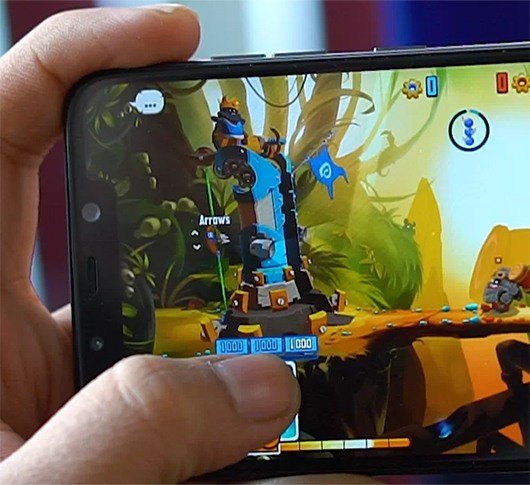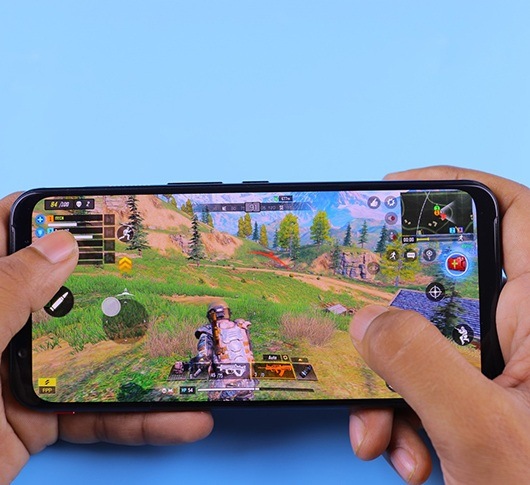It’s scary to imagine what modern gaming would look like if games were not properly tested. While we have had some prominent releases recently where games were utterly broken (like Cyberpunk 2077 and WWE 2K20), these are mostly exceptions to the rule. Any developer/publisher with a shred of common sense understands the importance of game testing, and will dedicate the resources needed to see it through thoroughly.
If you’re in the business of making games, you will need to apply many different types of game testing for each project, and knowing all the available options helps. So, we will cover these types, help you formulate a plan for testing, and tell you about expert game testing services, in case you go that route.
What are the 2 Main Approaches to Game Testing?
Most of the activities that relate to game testing or QA (quality assurance) fall into 2 categories – black-box testing and white-box testing.
Black-box testing is the most accessible and objectively neutral form of testing. Basically, the tester has little to no prior knowledge about the game and tests various aspects of it from the perspective of a user. A black-box game tester doesn’t need to know any programming or understand the architecture behind the game, they just focus on the things that users can see and experience.
In contrast, white-box testing is very precise, and meant to foster functional improvements to a game that may not even be noticeable to the average player. Because it requires deep knowledge of the game architecture and coding, this approach is mostly used by developers themselves before the software is submitted for further review by the QA team.
What are the Different Game Testing Methods?
Here’s where we get into the nitty-gritty and focus on the many different types of game QA testing methodologies available.
Game functionality testing
Functional testing is an activity that aims to determine whether a game is working according to specifications and identify any bugs or issues that could negatively impact the player experience. This applies to both mobile game testing and that for other platforms, including PC, console, web, and VR/AR. We can sort the tests into multiple subtypes:
Interoperability game testing
Description
Used to test how a game interacts with other applications. Testers look for any compatibility issues, including feature inaccessibility, poor performance, and delays in communication.
When you need it
Mostly used for multiplayer games and those that make use of advanced device functions (e.g. internet uplink, Bluetooth, camera, etc.).
Regression game testing
Description
This cycle is applied after major code updates to make sure that the update has not adversely affected existing functionality (e.g. breaking a feature, adding numerous new bugs, etc.). The goal is to make sure that the code still works.
When you need it
This is a very common practice both during development (when new builds are created) and in the post-launch period, as maintenance and updates are implemented. You can automate many of these tests.
Smoke game testing
Description
Smoke testing is all about verifying stability after a code update. However, it tends to be a really simple assessment, checking basic things like whether the game launches, whether the UI is still responsive. It can be performed by both developers and testers.
When you need it
Smoke testing tends to be performed right before regression testing, so we can say that it is just as common and essential to every project. It is considered a good practice to conduct it every day of the project.
Localization game testing
Description
This method is intended to ensure that a game is fully usable and enjoyable to players in different countries and regions. Firstly, all of the same features and functionality must be accessible in different locations (unless planned otherwise). Secondly, the content should be adapted to the languages and cultures where it is presented.
When you need it
This kind of testing is vital if you plan to release your game in several languages, or you plan to make different content available in different regions. Thus, it is preferable for testers to have ample knowledge of the associated languages/cultures before they begin assessing the software.
Security access control game testing
Description
A very important practice that checks whether any loopholes or unauthorized gateways exist that can let someone access the game backend or elements/features that are otherwise restricted. For example, some players try to hack games to get free in-game rewards or currency, make themselves invincible, etc., and access control prevents it or at least reduces the likelihood.
When you need it
Though this form of testing rarely leads to any changes that affect the user experience or which are even noticeable, it is recommended to still conduct it at least once before release and each post-launch update. It can be conducted by general game QA engineers, or experienced pen (penetration) testers.
User acceptance game testing
Description
This is one of the last testing stages before a game is released on production. Sometimes, it is conducted as a beta test, drawing in players outside the development team. Big issues are rarely found, so the focus is mostly on polishing any remaining minor bugs and making small improvements to the user experience.
When you need it
By engaging external beta testers, you can get a fresh perspective on the player experience and collect valuable feedback about possible improvements that the development team was not aware of or did not pay enough attention to. For example, mobile game beta testing may draw in an age group with unique insights and wishes that your adult testing team didn’t account for.
Non-functional game testing
This category of quality assurance covers the aspects of the game that functional testing doesn’t apply to, like evaluating performance, scalability, and usability. You can use automated game testing in most situations, but a select few require a creative touch and lots of manual tinkering. Let’s examine the varieties:
Performance game testing
Description
As the name suggests, this approach evaluates how well the game works, in aspects like battery consumption, memory usage, and frame rate. It can also evaluate client/server response times and how the game functions with different levels of network connectivity.
When you need it
It’s recommended to start performing this test when you have a working build, and continue doing it with every major code update, including post-launch.
Load game testing
Description
This practice is somewhat similar to performance testing, but the goal is somewhat different. Testers try to push the game to its limits and record when things start to go wrong (crashes, poor performance, etc.). Oftentimes, testers simulate a large number of players using the game simultaneously to see how many the server can handle.
When you need it
This method is mostly used for games with networking/multiplayer features, though can also be helpful in determining how the software performs with different player hardware.
Stress game testing
Description
Similar to load testing, but involves sudden increases of the load on the system. In contrast, load testing gradually raises the strain on the system.
When you need it
You can use it to identify in which instances the game will fail/crash, and get a gauge on how it works under unusual circumstances. Thus, it is a generally-useful method.
Stability game testing
Description
Stability testing is quite similar to the previous two testing types, except it tends to be conducted for much longer, and collects data from all stages of the test. It mostly analyzes memory leaks, sudden crashes, and anything else that can impact reliability.
When you need it
This is a widespread practice used in every normal game project, and can be initiated with the creation of the first working build and onwards.
Volume game testing
Description
Volume testing is quite similar to load testing, but it does not evaluate the server’s response to connections, rather the transmission of data and database performance. It checks events of data loss and determines the circumstances that caused them.
When you need it
This is another essential test conducted in most projects. Sometimes, it is bundled in with load, stress, and stability tests which have similar purposes.
Usability game testing
Description
An evaluation of how convenient and enjoyable it is to play a game. Testers check how well players are able to master and make use of the game mechanics, navigate the different menus and options, etc.
When you need it
Usability testing can be performed both during prototyping of functionality and close to the release of the final build. This can be especially important for ported games, such as when you need to test a game’s PC compatibility with console controls and features.
Compliance game testing
Description
In the context of a project, this practice involves evaluating the methodology, standards, and documentation of development. As for the game itself, it focuses on analyzing whether it accomplishes its business goals.
When you need it
While this practice is optional and rarely performed by QA engineers, it can help keep the development process efficient and laser-focused. It can be done both before and after development.
Installation game testing
Description
Usually a simple test that makes sure all software components are installed properly and function after download and setup.
When you need it
An essential test for completed builds, often performed in parallel with smoke testing.
Configuration game testing
Description
The game configuration is tested on different devices, or a single device with different hardware/OS specifications. Ideally, the same level of performance and user experience should extend to players with different gaming setups.
When you need it
It is absolutely vital that you conduct this series of tests at least once prior to release. Some platforms (like Android) have hundreds of device configurations, so Android game testing is usually done on emulators and simulators instead of physical device models.
Disaster recovery game testing
Description
As you might guess, this test analyzes the repercussions of game crash/failure, including which (if any) data is lost, and how well it can be recovered. Naturally, the ability of the game to launch without issue after a crash is also tested.
When you need it
This test often happens as a byproduct of other tests. Thus, you can start conducting it only after identifying a way to make the game crash.
How Can You Get Started with Game Testing?
In theory, anyone can learn how to test a game, even if they were not trained to be a QA engineer. However, being successful and effective at testing is a whole other matter, and large-scale projects usually need qualified testers to succeed. Thus, you may consider hiring these professionals or delegating the testing to a company with extensive experience in the field.
Get professional game testing services at a good rate
Whichever option you choose, the testing process will more or less be the same. We understand that the dozens of testing types we listed are all unique and require different software, methodology, and knowledge, but the stages of testing are usually uniform:
-
Planning
You have to walk before you run, and testing is no different. Rather than testing when the need occurs, you can make the process more efficient by creating a comprehensive plan with a list of test cases and chronology.
-
Testing
There’s not much to say about this stage. A test can take anywhere between a few minutes to several days. It is not uncommon for several tests to be conducted simultaneously.
-
Bug reports and fixes
QA engineers encounter many types of bugs in game testing, and it is their job to document them all. The data from the test and any bugs/issues identified are packaged in a bug report and submitted to developers for fixing in a future build.
-
Finalization and beta
There comes a point in every game development cycle when a game is more or less complete, with only a few minor issues remaining. At this point, some publishers launch a beta and gather feedback from game user testing, while others focus on polishing the title on their own. Sometimes, due to time constraints, games are released with a few minor unresolved issues/bugs, but fixes are rolled out in a post-launch update.
If you want to learn more about the process and its many aspects, be sure to check out our comprehensive guide to game testing.
How You Can Get Professional Game Testing Services
While there are many studios out there that provide game testing services, you should be careful in your choice. After all, many of them have only worked with small/indie game projects and may not have the experience to handle games with a large scope and complex functionality. Furthermore, they may be great at gathering data and identifying issues, but lacking in other areas, such as assessing how well a game is fulfilling business goals and catering to its target audience.
You won’t have any of these concerns if you choose to work with Game-Ace. Our studio has broad experience in not only testing games, but developing them as well. Thus, we understand this hectic undertaking and are ready to help you in more ways than one.
No matter how large the scope of your game is or how tight the timeframes are, we are ready to discuss your project and help in any way possible. Just contact us and we can get started!
 Mobile Game Testing: Types, Tools, and More
Mobile Game Testing: Types, Tools, and More  Understanding the Role of QA Game Testers in Game Development Projects
Understanding the Role of QA Game Testers in Game Development Projects  Game QA Companies: What Is Their Role and How to Choose the Best?
Game QA Companies: What Is Their Role and How to Choose the Best?  Five Key Video Game Testing Stages
Five Key Video Game Testing Stages  Android Game Testing: Things to Keep in Mind and Check
Android Game Testing: Things to Keep in Mind and Check 


































